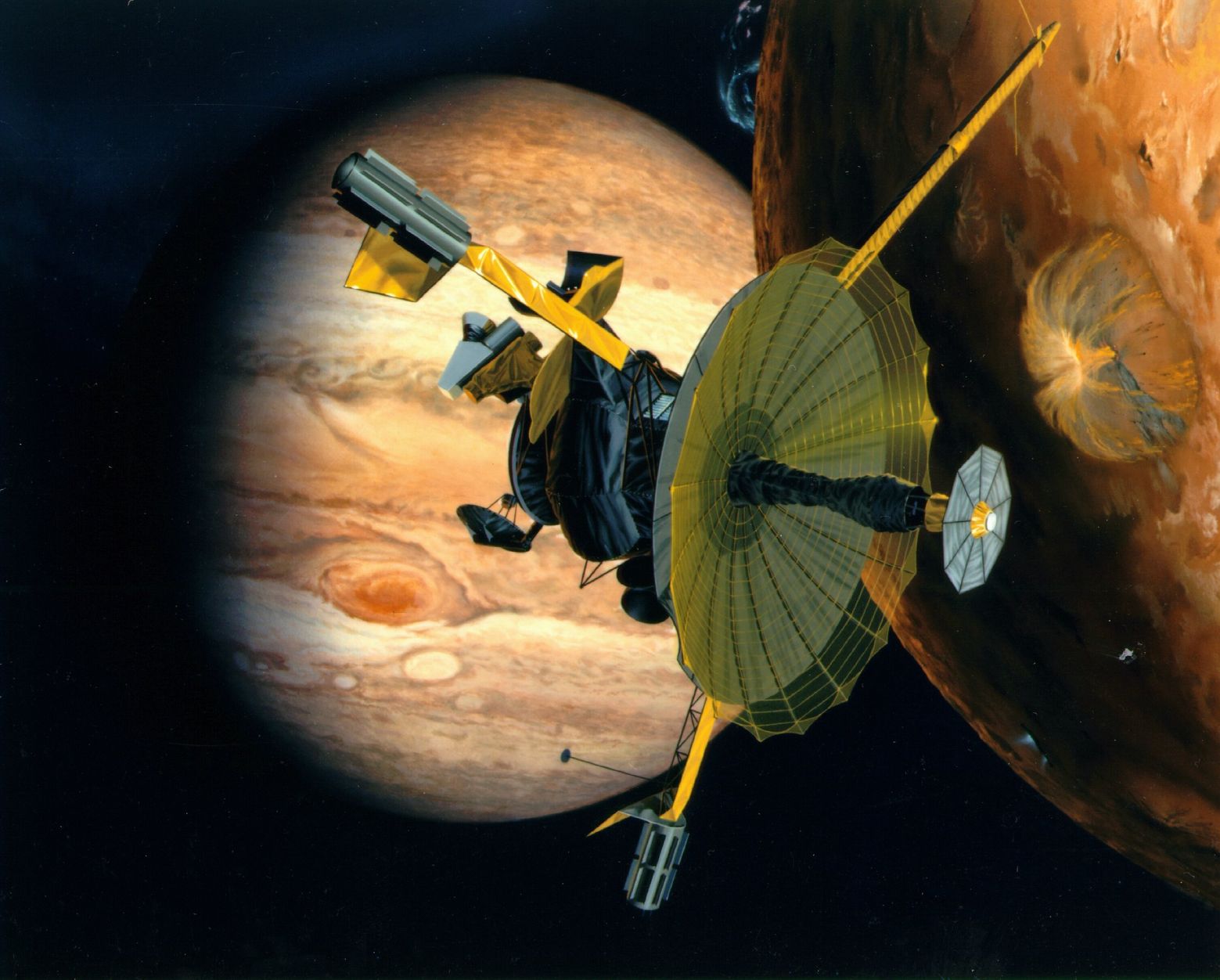
Did you know the Galileo spacecraft was the first to orbit Jupiter? Launched in 1989, Galileo transformed our understanding of the largest planet in our solar system. This spacecraft provided unprecedented insights into Jupiter's atmosphere, its moons, and its magnetic field. Why was Galileo so special? It carried a suite of scientific instruments designed to study everything from the planet's cloud layers to its volcanic moon, Io. What did it discover? Among its many findings, Galileo revealed the presence of a subsurface ocean on Europa, one of Jupiter's moons. Want to learn more? Here are 30 fascinating facts about the Galileo spacecraft that will blow your mind!
Galileo Spacecraft: A Journey to Jupiter
The Galileo spacecraft was a marvel of engineering and scientific ambition. Launched by NASA, it embarked on a mission to study Jupiter and its moons. Here are some fascinating facts about this incredible mission.
-
Launch Date: Galileo was launched on October 18, 1989, aboard the Space Shuttle Atlantis.
-
Named After: The spacecraft was named after Galileo Galilei, the Italian astronomer who discovered Jupiter's four largest moons.
-
Mission Duration: Originally planned for two years, the mission lasted over 14 years, ending in 2003.
-
Complex Route: Galileo took a complex route to Jupiter, using gravity assists from Venus and Earth to gain speed.
-
First Asteroid Encounter: It was the first spacecraft to fly by an asteroid, Gaspra, in 1991.
-
Second Asteroid Encounter: In 1993, Galileo flew by another asteroid, Ida, discovering its moon, Dactyl.
Exploring Jupiter and Its Moons
Galileo provided unprecedented insights into Jupiter and its moons. Here are some key discoveries.
-
Jupiter's Atmosphere: The spacecraft sent a probe into Jupiter's atmosphere, providing the first direct measurements.
-
Great Red Spot: Galileo studied Jupiter's Great Red Spot, revealing it as a massive storm larger than Earth.
-
Io's Volcanic Activity: It discovered over 300 active volcanoes on Io, making it the most volcanically active body in the solar system.
-
Europa's Ice Crust: Galileo found evidence of a subsurface ocean beneath Europa's icy crust.
-
Ganymede's Magnetic Field: It discovered that Ganymede has its own magnetic field, the only moon known to have one.
-
Callisto's Surface: The spacecraft revealed that Callisto's surface is heavily cratered and ancient.
Technological Marvels and Challenges
Galileo's journey was not without its technological feats and challenges. Here are some notable aspects.
-
High-Gain Antenna Failure: The spacecraft's high-gain antenna failed to fully deploy, limiting data transmission rates.
-
Innovative Solutions: Engineers developed new data compression techniques to overcome the antenna issue.
-
Radiation Hardening: Galileo was designed to withstand Jupiter's intense radiation environment.
-
Power Source: It used radioisotope thermoelectric generators (RTGs) for power, essential for deep space missions.
-
Dual Spin Design: The spacecraft had a dual-spin design, with a spinning section for stability and a despun section for instruments.
-
Magnetometer Boom: Galileo's magnetometer was mounted on an 11-meter boom to avoid interference from the spacecraft.
Scientific Instruments and Discoveries
Galileo was equipped with a suite of scientific instruments that made groundbreaking discoveries.
-
Solid-State Imaging: The spacecraft's camera provided high-resolution images of Jupiter and its moons.
-
Near-Infrared Mapping Spectrometer: This instrument studied the composition of Jupiter's atmosphere and moons.
-
Ultraviolet Spectrometer: It analyzed the ultraviolet emissions from Jupiter and its moons.
-
Dust Detector: Galileo's dust detector measured the size and velocity of dust particles in the Jovian system.
-
Energetic Particles Detector: This instrument studied the high-energy particles in Jupiter's magnetosphere.
-
Plasma Wave Subsystem: It measured the plasma waves in Jupiter's magnetosphere, providing insights into its dynamics.
Legacy and Impact
Galileo's mission has left a lasting legacy in space exploration and our understanding of the solar system.
-
First Detailed Study: It was the first spacecraft to conduct a detailed study of Jupiter and its moons.
-
Inspiration for Future Missions: Galileo's discoveries have inspired future missions like Juno and the upcoming Europa Clipper.
-
Educational Outreach: The mission included extensive educational outreach, inspiring a new generation of scientists.
-
Data Archive: The data collected by Galileo continues to be analyzed by scientists today.
-
End of Mission: To avoid contaminating Europa, Galileo was deliberately crashed into Jupiter on September 21, 2003.
-
Cultural Impact: The mission has been featured in books, documentaries, and even a postage stamp, cementing its place in popular culture.
Galileo's Legacy
Galileo spacecraft's mission changed our understanding of the solar system. Launched in 1989, it provided groundbreaking data on Jupiter and its moons. The spacecraft's discoveries included evidence of subsurface oceans on Europa and volcanic activity on Io. These findings have fueled ongoing research and inspired future missions.
Galileo's journey wasn't without challenges. It faced technical issues, like a malfunctioning high-gain antenna, yet still delivered valuable information. The mission's success demonstrated the resilience and ingenuity of space exploration teams.
The spacecraft's legacy lives on through the data it collected, which continues to be analyzed by scientists. Galileo's contributions have paved the way for new missions, such as the upcoming Europa Clipper, aimed at exploring the icy moon further.
Galileo's mission reminds us of the importance of curiosity and perseverance in expanding our knowledge of the universe. Its impact will be felt for generations.
Was this page helpful?
Our commitment to delivering trustworthy and engaging content is at the heart of what we do. Each fact on our site is contributed by real users like you, bringing a wealth of diverse insights and information. To ensure the highest standards of accuracy and reliability, our dedicated editors meticulously review each submission. This process guarantees that the facts we share are not only fascinating but also credible. Trust in our commitment to quality and authenticity as you explore and learn with us.


